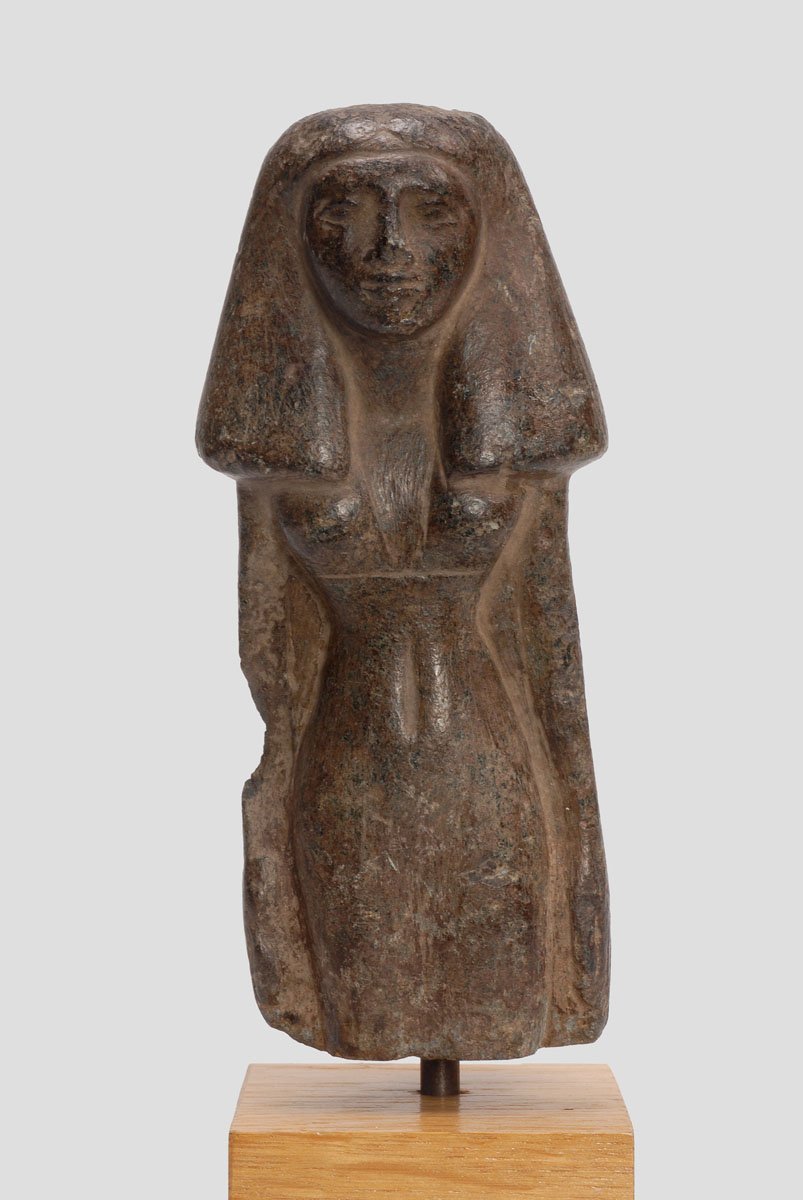
Fragmentary Statuette of a Woman
Egyptian Art
| Place of production | Akhmim, Egypt |
|---|---|
| Date | 4th-3rd centuries B.C. |
| Object type | sculpture |
| Medium, technique | Wood, paint |
| Dimensions | 76.8 x 12.5 cm |
| Inventory number | 51.2098 |
| Collection | Egyptian Art |
| On view | Museum of Fine Arts, Basement Floor, Ancient Egypt, Funerary beliefs |
The painted wooden funerary statue is a characteristic piece of the so-called Ptah-Sokar-Osiris statue type. Ptah-Sokar-Osiris was one of the most popular funerary gods of the first millennium BC who incorporated three divinities (the creator god Ptah, Sokar, the funerary god of Saqqara, and Osiris, the ruler of the netherworld) in a single divine figure. The inclusion of the new statue type within contemporaneous burial equipment suggests that the deceased was hoped to become a divine being similar to Ptah-Sokar-Osiris after death, possessing his creative energies and his ability for rebirth at the same time.
This statue is standing on a long rectangular base. The mummy-shaped slender figure wears ram horns on the head with a red sun disc and colourful double feathers on it. The blue wig bordering the finely elaborated, bright golden-toned face is knotted by a yellow band running along it. The large-sized wesekh-collar covering the whole upper body is fitted by fasteners in the form of a hawk head on the shoulders. The body itself is painted in dark red (imitating the shrouds of the real mummy). Below the collar in a rectangular frame reminiscent of a divine sanctuary (naos) an Osiris figure sits with a scepter in its hand, wearing the sign of Isis on the head. The square serves as the header for a single hieroglyphic text column extending to the feet. The fragmentary inscription contains the name and various divine titles of Osiris and those of the deceased and his father.
On the back of the head is a – now empty – rectangular hollow cavity. Whatever it once contained (perhaps a miniature papyrus amulet) is unknown. The family of the owner can be associated with Akhmim and the piece can be dated to the earlier phase of the Ptolemaic Period.
This record is subject to revision due to ongoing research.